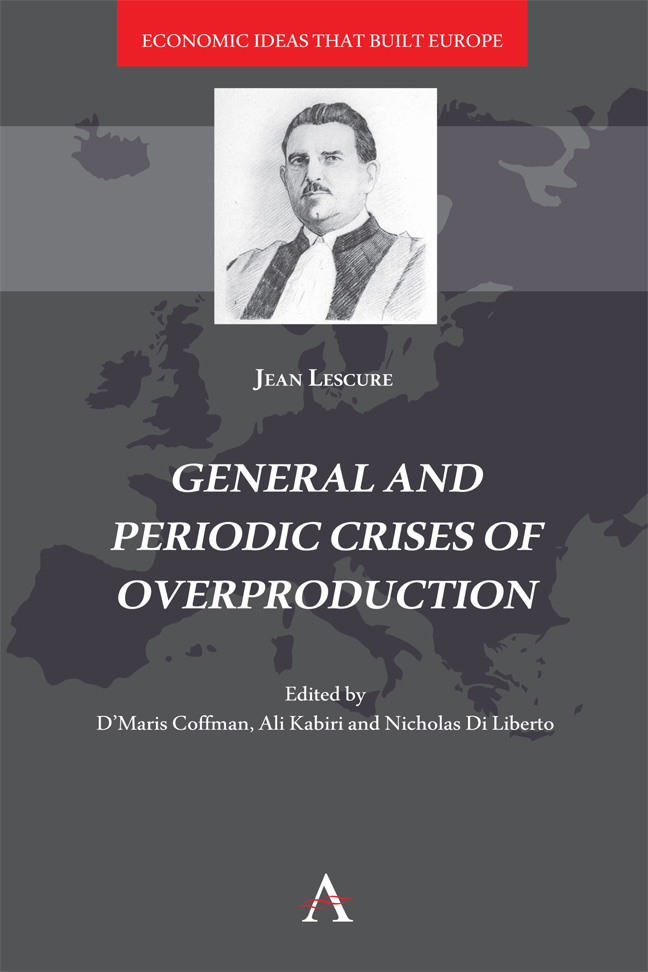Book contents
- Frontmatter
- Contents
- Acknowledgements
- Introduction: Jean Lescure on the Role of Solidarité in Industrial Economies and Among the Social Sciences
- Translator's Note
- General and Periodic Crises of Overproduction
- List of Figures
- List of Tables
- Preface to the Third Edition
- Preface to the Fourth Edition
- Preface to the Fifth Edition
- Volume One The Phenomenon
- Volume Two Causes and Remedies
- Conclusion
- Annexes
- Appendix One Bibliography of the Works Cited by Jean Lescure
- Appendix Two Bibliography of the Works of Jean Lescure
- Index
Preface to the Fifth Edition
Published online by Cambridge University Press: 01 March 2024
- Frontmatter
- Contents
- Acknowledgements
- Introduction: Jean Lescure on the Role of Solidarité in Industrial Economies and Among the Social Sciences
- Translator's Note
- General and Periodic Crises of Overproduction
- List of Figures
- List of Tables
- Preface to the Third Edition
- Preface to the Fourth Edition
- Preface to the Fifth Edition
- Volume One The Phenomenon
- Volume Two Causes and Remedies
- Conclusion
- Annexes
- Appendix One Bibliography of the Works Cited by Jean Lescure
- Appendix Two Bibliography of the Works of Jean Lescure
- Index
Summary
Recently, and for the first time in history, the interval between the periodic crisis and the recovery has been filled by an unprecedented monetary and credit crisis as a distant consequence of the 1914 war. We cannot deal with this in any detail without going beyond our subject. However, we have tried to state the essential and to show in particular that it cannot be considered as a crisis of the capitalist system: it is the logical, inevitable result of the massive recourse to credit and resulting overproduction which prevented mankind from running out of food, equipment, arms and munitions during and after the war, until the end of reparations. Here we have situated the role of the United States, explaining the violent crisis to which it fell victim. Understanding this crisis, its antecedents and causes, is of great consequence. The crisis has been resolved, and if humanity can maintain the benefits of peace, it will not be repeated. It did not prevent the traditional recovery from taking place. This recovery is most original, at times spontaneous and at times managed [dirigée] by the state. We have described it in some detail. It was marked by the decrease in interest rates, induced everywhere, and achieved in England and in the United States thanks to the open-market policy and elsewhere (in Germany and Belgium) by other methods.
Currency devaluations have also preceded and primed the recovery, restoring profit margins that had declined as a result of the world disruption. And here we have found new empirical confirmation of the method of explaining alternating periods of growth and depression through profit variations.
Massive gold movements and capital migrations have posed unprecedented problems for central banks and exchange stabilization funds: countries will have to be protected against large and sudden variations in discount rates likely to hinder the economic recovery or stem the prosperity.
Finally, the literature devoted to the ‘planned economy’ is far too abundant, with recovery plans occupying too large a place for us to remain silent on the topic. The managed monetary policy [monnaie dirigée] of the planned economy has retained our attention, without gaining our support.
On numerous other points we have made revisions, corrections and updates.
In this preface, we have limited ourselves to indicating the essential new findings. We hope that this summary will justify in the eyes of our readers the publication of this fifth edition.
- Type
- Chapter
- Information
- General and Periodic Crises of Overproduction , pp. 59 - 60Publisher: Anthem PressPrint publication year: 2023

